- Home
- Rebecca Levene
Grand Thieves & Tomb Raiders
Grand Thieves & Tomb Raiders Read online
Magnus:
For Hazel, who is wonderful, and to my family, who have been supporting whatever I get up to for longer than the history covered by this book.
Rebecca:
For Anne and Alan Wernick, quite possibly the best aunt and uncle in the world.
Contents
Acknowledgements
Introduction
<1> Emerging from the MUD
<2> BASIC Differences
<3> We Bought It to Help with Your Homework
<4> Pro-Am Games
<5> Brave New Worlds
<6> Technical Failures
<7> Wandering Creatures
<8> How to Crack the Console Market
<9> Lost Properties
<10> Lara
<11> Hit and Run
<12> Small Victories
Appendix 1: Free Demo!
Appendix 2: Further Gaming
Bibliography and Sources
Index
About the Author
Copyright
Acknowledgements
Many people helped tremendously during the writing of this book, particularly those who so generously gave us their time for interviews. We owe huge thanks to: David Allen, Paul Arendt, Richard Bartle, Ian Bell, Shelley Blond, David Braben, Patrick Buckland, Charles Cecil, Peter Cooke, Glenn Corpes, Geoff Crammond, Chris Curry, Mike Dailly, David Darling, Les Edgar, Martin Edmondson, Bruce Everiss, Steve Furber, Julian Gollop, Andrew Gower, Keith Hamilton, Mark Healey, Jeremy Heath-Smith, Jonathan L. Howard, Andrew Hutchings, Peter Irvin, David Jones, Alexis Kennedy, Rob Landeros, Ian Livingstone, Jacqui Lyons, Philip Oliver, David Perry, David Potter, Jon Ritman, Jez San, Eben Upton, Sophie Wilson and Tim Wright.
We also received much appreciated help from James Campbell Andrew, John Cook, Holly Gramazio, Lindsay Ingham, Darran Jones and Retro Gamer magazine, Adrian Killens, Iain Lee, Daniel Nye Griffiths, Mark Sinker, Kat Stevens, Daniel Tucker, James Wallis, and from countless other people who helped us to track down interviewees.
Particular thanks go to Mark Hibbett for letting us use a lyric from his song ‘Hey Hey 16K’ as the title for Chapter 3, to David Perry for kind permission to reproduce a listing of the code for Snake for the ZX Spectrum, to our agent James Wills for his enthusiasm and support, and to Joe Browes for his sharp-eyed review of our manuscript and pitch-perfect suggestions.
Finally, our biggest thanks go to our editor, Sam Harrison, for his skilful guidance, and quite extraordinary patience.
Magnus Anderson and Rebecca Levene
London
August 2012
Introduction
In central London, not far from the bustling bars and restaurants of Soho, the British were forming a queue. It was a crisp Thursday night at the end of October 2004, yet the crowd had been gathering for hours and now stretched more than a hundred yards down Oxford Street. Of course, events drawing large crowds aren’t unusual in London, but these people weren’t here for a movie premiere or a public appearance by a hot new pop act. They were waiting outside the flagship store of the retail chain Game, which at midnight would start to sell the year’s most anticipated computer game: Grand Theft Auto: San Andreas.
Similar queues had formed at dozens of other shops across the country, and indeed, hundreds more around the world – anticipation was fevered. Three days earlier, the game had been released in the United States, where, in every large city, retailers had laid on extra staff, coffee shops had stayed open late, and television crews had loitered through the night to cover the event. And the media were right to pay attention: in Britain alone, the game would break records. At the time, it marked the biggest opening week for any entertainment product in history; outselling the latest Harry Potter movie, and everything else. Worldwide, it went on to sell twenty-two million copies.
The Grand Theft Auto series had long been a phenomenon. Games of car-jacking and improvised mayhem set in vast satires of US cities, they caricatured every aspect of modern Americana: the advertising, radio stations, even the chatter of passers-by. To the gamers queuing on Oxford Street, this long-awaited new chapter meant another story from the dark side of the American dream; to British newspapers it meant imported violence and controversy. For everyone, whether they relished or condemned it, Grand Theft Auto was another megalith of the US culture industry.
Except that it was made in Britain. The writer and producer were Londoners based in New York, but the code – the nuts and bolts that made the game – was put together in Edinburgh. And that was no anomaly: all the Grand Theft Auto games had been developed in Scotland. For three decades, Britain had been building a computer games industry that was recognised as one of the best in the world. And it all started by accident.
Take Grand Theft Auto: San Andreas as an example. It was made in Edinburgh because the franchise itself was invented by a Scottish company. That company had been founded on the skills learned from programming British home computers; back in 1997, the very first Grand Theft Auto was inspired by a British game made over a decade earlier. That previous game had only been possible to make because it was developed on a computer that gave its programmers incredible freedom. And that computer had been designed to do so under the auspices of the BBC, which itself was channelling the concerns of a government worried about the nation’s industrial decline and the challenges posed by the rise of microchip. Moreover, this is just one example. There are many, many more chains that link many, many more hit titles back to the same cause. The worldwide success of the British games industry was a spectacular explosion of unintended consequences.
Yet it had a humble genesis. Rival groups of high-minded electronics entrepreneurs and Cambridge academics competed to bring computers to homes and schools, and gave birth to machines such as the Sinclair ZX Spectrum and the BBC Micro. These home-grown machines democratised access to computers and made simple programming skills commonplace – for a while, Britain may have been the most computer literate country in the world.
So the bedrooms of 1980s British teenagers became hives of invention. Every school child could dream about writing a hit game. Indeed, many did. The amateur enthusiasts of those years produced fondly remembered titles and astonishing breakthroughs, from Jet Set Willy to Elite. And they spawned a disorganised, disparate, wildly creative industry that, in time, would generate a turnover measured in billions.
Precisely because of its almost accidental origins, the story of British computer games is exciting and sometimes messy, but ultimately a picture of success. The innovators who emerged at the dawn of the Thatcher years continued to shape the industry for decades, and many are still making major contributions today, whether by designing new games, or through their efforts to perpetuate the legacy of that early, anarchic programming culture. Tomb Raider and Grand Theft Auto may be the two most recognised British brands, but they are part of a rich lineage. This book explores that heritage, and attempts to explain why British soil proved so fertile for the growth of gaming. It is a celebration of have-a-go amateurism, brilliant talent and left-field creativity that have enriched computer games all around the world.
For the story ahead takes place not just in British bedrooms, but also in Japanese boardrooms, American courtrooms and the bombed-out wreckage of the Grand Hotel in Brighton. However, its first location is 1970s Essex, as a pair of undergraduates set out to challenge British prejudices in a virtual world, and inadvertently create one of gaming’s most popular and enduring genres.
1
Emerging from the MUD
If Richard Bartle had done better in his A-level maths, a genre of computer games worth billions of dollars, one which has created new industries and even economies, and which has changed
countless peoples’ lives around the world, might have been very different.
The games are Massively Multiplayer Online Role-Playing Games, known more commonly and awkwardly by their initials: MMORPGs. They are set in fantastic worlds entirely invented by games-makers, brought into being on internet servers, and inhabited by outlandish characters controlled by players who could be anywhere in the world. Although no one is sure quite how much money the games make, one recent report estimated that players’ monthly subscriptions bring in nearly three billion dollars each year, with billions more earned through the voracious ‘virtual’ economies and murky black markets that have grown up around them.
As with so many computer game genres, the origins of the MMORPG are far more humble. Their ultimate ancestor was born in a British university, made by Bartle and his friend Roy Trubshaw from a marriage of ingenuity and idealism, created quite literally on borrowed time. It’s called the Multi-User Dungeon, and so bears a more modest acronym: MUD.
Without MUD, something like a MMORPG would have emerged eventually, but in a different shape, and probably not nearly as quickly, or as quirkily. And whoever made it would almost certainly not have designed it – as Bartle and Trubshaw did – as a reaction to the British class system.
There wasn’t much for a growing boy to do for entertainment in the seventies. Britain had three television channels, showing programmes that needed to be seen on broadcast, or were missed forever, and its film industry was moribund. Music came on vinyl and was expensive, taping from the radio had barely started, and the live scenes in some distant city would make little impact from one day to the next in a small town. Children had plenty of time for all-consuming hobbies – time that today might be filled with computer games.
But back then there were almost no computer games. The first of the video game consoles, the Videomaster Home T.V. Game, appeared in 1974. But these machines were rare and simplistic – an electronic gimmick to reproduce bat-and-ball games on a television. Genuine computing power was only to be found in the distant halls of select universities, a world away from a child’s bedroom.
Richard Bartle grew up in a council house in the Humberside town of Hornsea. His father was a gas fitter, his mother cooked school meals, and he attended the local school. His dad was a board game enthusiast who encouraged his sons to be the same – he held a family match each Sunday, and would never turn down a request to play. From an early age Bartle was immersed in gaming and was already learning the principles of game design.
He was also a clever boy, albeit by his own admission one who got by on ‘flair rather than hard work’. In the way that very capable children sometimes do, he hunted out pursuits that suited a lively mind. And where these fell short, he invented new ones for himself.
Bartle was one of the first people to try the new hobby of role-playing games. These were very different from board games: they used conversation, adaptable combat rules, and verbal improvisation to generate free-form adventure stories between groups of people; Dungeons & Dragons remains the most famous example. Bartle usually took the part of ‘games master’ – a kind of writer-producer role, who established adventures for the other players to immerse themselves in. He spent hours creating stories and games, including many of his own design. In one, the players took on the roles of Victorian explorers traversing vast maps that Bartle had drawn on paper stitched together with Sellotape.
He played obsessively, inventing new games with his brother and playing them with school friends most evenings, but soon his appetite stretched further. ‘Play-by-mail’ games, where gamers sent moves through the post to strangers across the country, were gaining in popularity amongst enthusiasts. While traditional role-playing games could run like improvised radio dramas, postal games were more like playing chess by exchanging post-cards with your opponent, one move at a time. They were achingly slow, but the sense that there was an unseen opponent was utterly compelling.
Bartle’s interest went deeper than simply playing: he created and published his own fan magazine about the games he loved. This wasn’t that uncommon in the emerging gaming scene, where hand-made, photocopied ’zines proliferated. Even Bartle’s choice of title, Sauce of the Nile, followed the convention of using puns around historical or fantasy themes. It had the colloquial feel of an amateur publication, but where other ’zines reviewed, commented and joked, Bartle was more ambitious: he used his as a platform for developing new games, and linking readers across the country to play them.
The most successful of Bartle’s home-grown postal games was called Spellbinder, which he themed to his tastes: players took on the role of wizards, attempting to defeat each other with spells. By now a veteran of playing board and strategy games, Bartle’s design allowed for emergent, complex gameplay, and players lapped it up. It was popular enough to be repeatedly revised during the following decade, usually to make it more complicated.
And Bartle’s isolation in Hornsea had another, quite unexpected, benefit. The cabinet-sized computers of the seventies were usually the preserve of universities and large corporations and it was common for schools to arrange some access for promising students on a visiting basis. But Bartle’s school was given its own subsidised phone line to connect to a computer located at a nearby BP plant. Rather than having direct access to the computer itself, students could dial up from a terminal in their school on a 110 baud modem – about a millionth of the speed of modern broadband connections. Though sometimes a laborious process, for a curious pupil like Bartle it opened the door to programming far wider than would have been possible in most of the country: ‘It was BP’s way of saying thanks to the community for letting them pump fumes into the air from their chemical works fourteen miles away,’ Bartle says.
Inevitably, having learned to program, he applied those skills to writing games. There would not be a retail games software market for years, so his was published in a completely different form – an ingenious role-playing adventure that ran as a single-player game. The Solo Dungeon foreshadowed the adventure gamebooks that would become popular in the eighties, but was more complex – closer to the logic of computer instructions – and yet also quite charming. Its typewritten introduction opens with the unusually honest remark that ‘we believe that there are no further errors to be found’.
It seems obvious now that the hobbies that were invading some British teenage bedrooms in the late seventies were uncannily suited to teaching computer game design, before any such discipline existed. By the time Bartle sat his A-levels, he had absorbed the core principles, managed a community of players, cut his teeth on writing for public consumption, learned the foundations of programming, published his first ground-breaking game and designed plenty more.
Given these demands on his time, perhaps it’s no surprise that the flair which so often substituted for graft wasn’t quite enough in his final mathematics exams – he had hoped to go to the University of Exeter, but when his results came back in the summer of 1978, he found himself headed to Essex instead. In retrospect, this change of destination seems fated, because, for what Bartle found there, he could not have been better qualified.
In 1978, Rob Trubshaw, a student at the University of Essex, made two fantastic discoveries. One was a lucky find. The other was an inspired insight into the mechanics of a state-of-the-art computer system, which worked around its careful security. It was a small, clever hack, but it created a completely new way of using the university’s machines.
Trubshaw could most often be found in the computer science department, making use of the university’s giant DECSYSTEM 10 computer. This resembled a blue filing cabinet, with a panel of switches which offered the uninitiated little clue as to their function. Even users normally couldn’t touch the DECSYSTEM 10 – it was kept in a controlled, air-conditioned room, connected to terminals outside. Those terminals enabled multiple users to operate it simultaneously, sharing its computing power, although access was strictly rationed. This was the kind of equipment that
established computing as the province of boffins – a discipline where byzantine operations served an impenetrable purpose. Computer use was no longer restricted to scientists in lab coats – anyone in the university could join the computer society – but to the layman’s eyes it was still dominated by a hallowed circle of experts.
Trubshaw was one such expert. He had started his degree in computer science a year earlier, and even within his department he stood out as exceptional. He would program the machine not only in the common languages of the day – MARCO 10, BCPL – but also in its more obscure but powerful assembler language. Although as an undergraduate he was a junior user, with all the access restrictions that such lowly status entailed, he was also one of the few people on the campus to own copies of the manuals for the system. He came to know the workings of the machine in a way that most people never needed to, and found ways to use it that even the computer’s makers hadn’t imagined.
It was during a conversation with his fellow student Barry Scott that he devised a programming technique that achieved something previously considered impossible. He and Scott were pondering ways to allow two users on the same machine to access each other’s work, but from different terminals. Normally this would be done by the first user saving work to one file, and the other opening it afterwards. The method was workable and safe, but slow and limited. And this was deliberate; affecting something that was happening on another terminal could lead to damaging accidents, or even vandalism, and was intentionally locked down. From day one, the computer’s design had always been intended to keep users such as Trubshaw and Scott in their boxes. But what these first year undergraduates discovered was a highly technical, but ingenious, way to completely bypass this limitation. There was a tiny piece of memory that was already shared – if they could alter it, they would be able to communicate without special privileges. The two students raced through Trubshaw’s manuals, eager to be the first to find a loophole in the system.

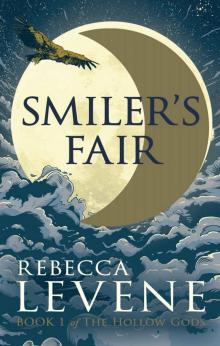 Smiler's Fair: Book I of The Hollow Gods
Smiler's Fair: Book I of The Hollow Gods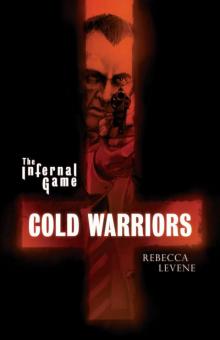 Cold Warriors
Cold Warriors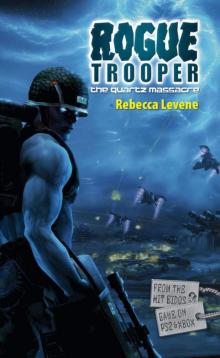 The Quartz Massacre
The Quartz Massacre The Hunter's Kind: Book II of The Hollow Gods
The Hunter's Kind: Book II of The Hollow Gods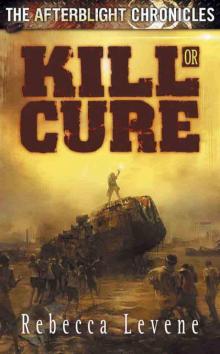 Kill or Cure
Kill or Cure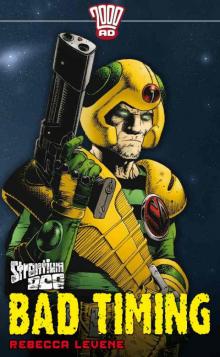 Bad Timing
Bad Timing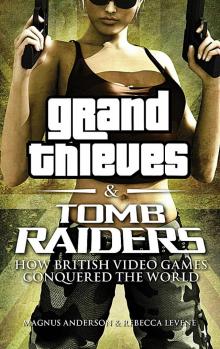 Grand Thieves & Tomb Raiders
Grand Thieves & Tomb Raiders Ghost Dance
Ghost Dance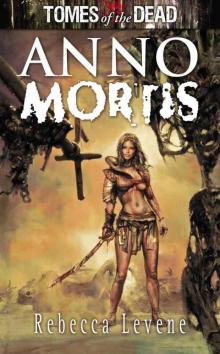 Anno Mortis
Anno Mortis